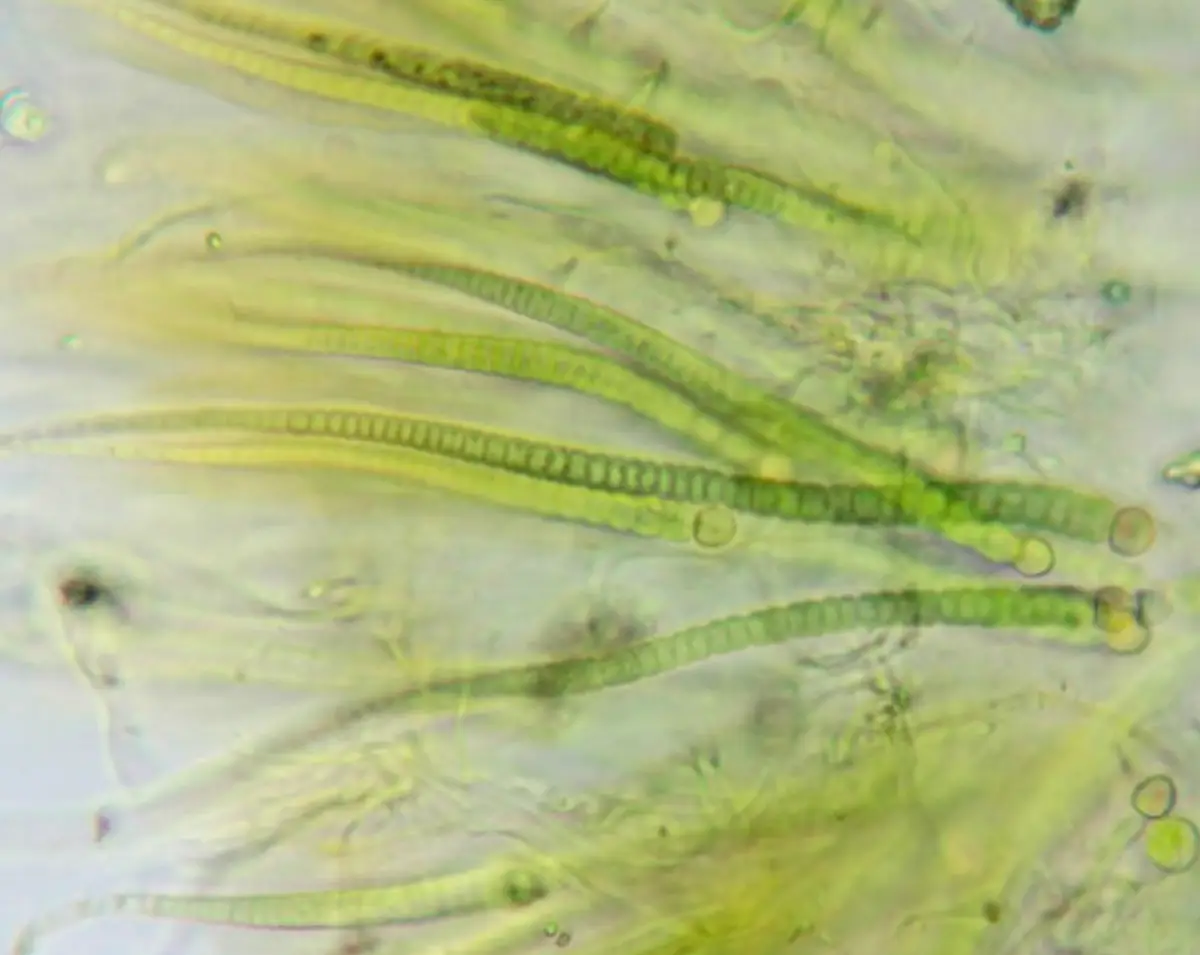CLASSIFICATION OF RIVULARIA
Sub-division :- Algae
Class :- Myxophyceae
Order :- Nostocales
Family :- Rivulariaceae
Genus :- Rivularia
Rivularia commonly occurs in aquatic habitats, as also on damp soil near river bed, between mosses on earth, moist rocks and in flowing waters. It is epiphytic, occurring on Nitella and other submerged stems and leaves of water plants.
EXTERNAL FEATURES OF THALLUS
- Thallus is colonial. Colony is enveloped by a mucilaginous sheath. The shape of the colony is spherical, hemispherical or irregular which attains macroscopic size when mature.
- Trichomes are radially arranged in a colony. Basal part lies toward the center, while tapering terminal end of the filament is nearer the periphery.
- Trichome is partially or wholly surrounded by a confluent sheath.
- Trichomes are unbranched, sometimes more or less irregularly false branched. These are broad at the base and gradually taper into a hair toward the apex.
- The base has a single heterocyst with a single polar nodule (basal heterocyst).
- Sheath is distinct in the basal part. It may be homogeneous or lamellated. Sheaths are more or less confluent at the distal ends.
- Radial arrangement of the trichomes in a colony is due to the repeated false branching in the basal portion of trichomes.
- The cell shows typical cyanophycean structure. There is a centrally located centeroplasm or ‘incipient nucleus’. Genetic material in the form of DNA is located in this region. Peripheral chromatoplasm shows dispersed pigments with shining cyanophycean granules.
- Reproduction occurs by homogonia produced either singly or in series.
- Hormogonia are special pieces of trichomes which on germination give rise to new thallus
IDENTIFICATION
- Sub-division – Algae
- Thallus simple,
- Chlorophyll present.
- Cell walls of cellulose.
- Class – Myxophyceae
- Chromatophore not organised, pigments diffused, blue-green.
- Photosynthetic reserve cyanophycean starch.
- True nucleus absent.
- Sexual reproduction absent.
- Order – Nostocales
- Thallus with trichomes, unbranched, or with false branching.
- Hormogones, heterocysts, exospores and endospores generally present.
- Family – Rivulariaceae
- Trichomes markedly attenuated from base to apex, or from middle to both extremities.
- Growth trichothallic, terminal hair.
- Trichomescommonly false branched.
- Rivulariaceae are a family of cyanobacteria within the Nostocales in which the filaments (trichomes) are tapered from wider at the base to narrower at the tip
- Genus– Rivularia
- Trichomes without akinetes.
- Each trichome singly enclosed by a sheath.
- Heterocyst basal.
- Filaments united into spherical or hemispherical thalli.


Leave a Reply